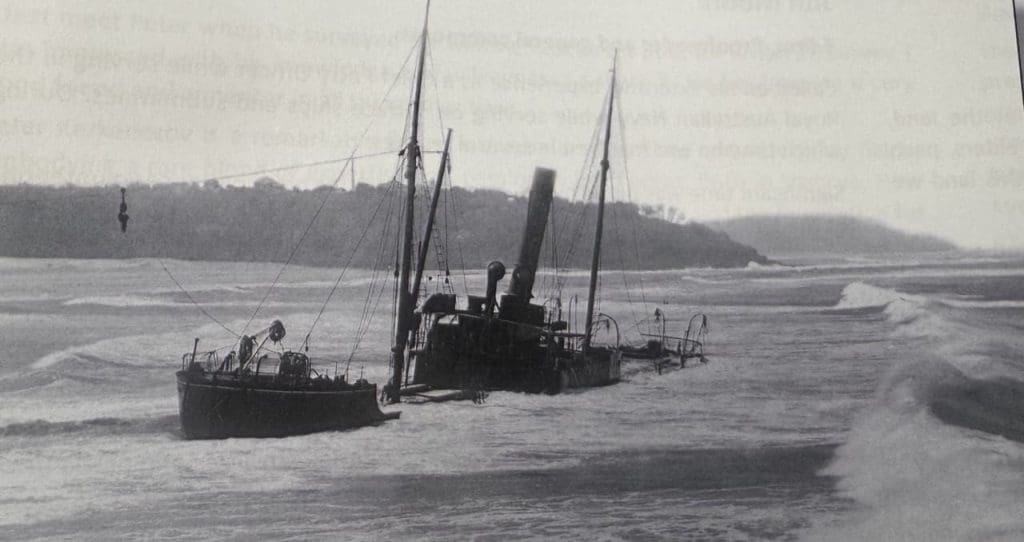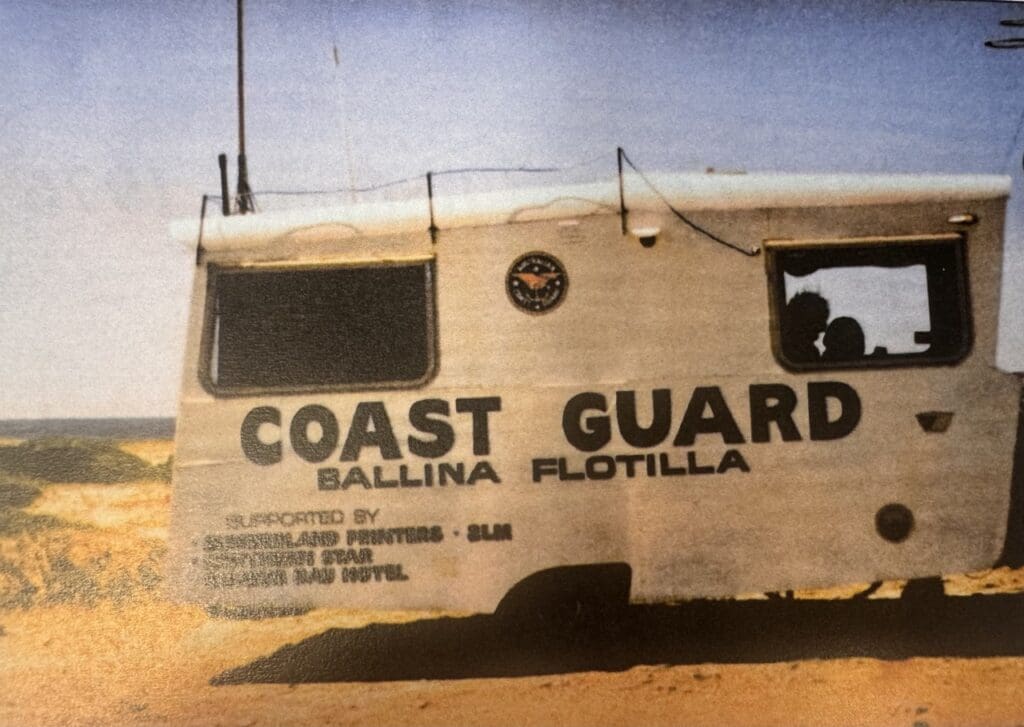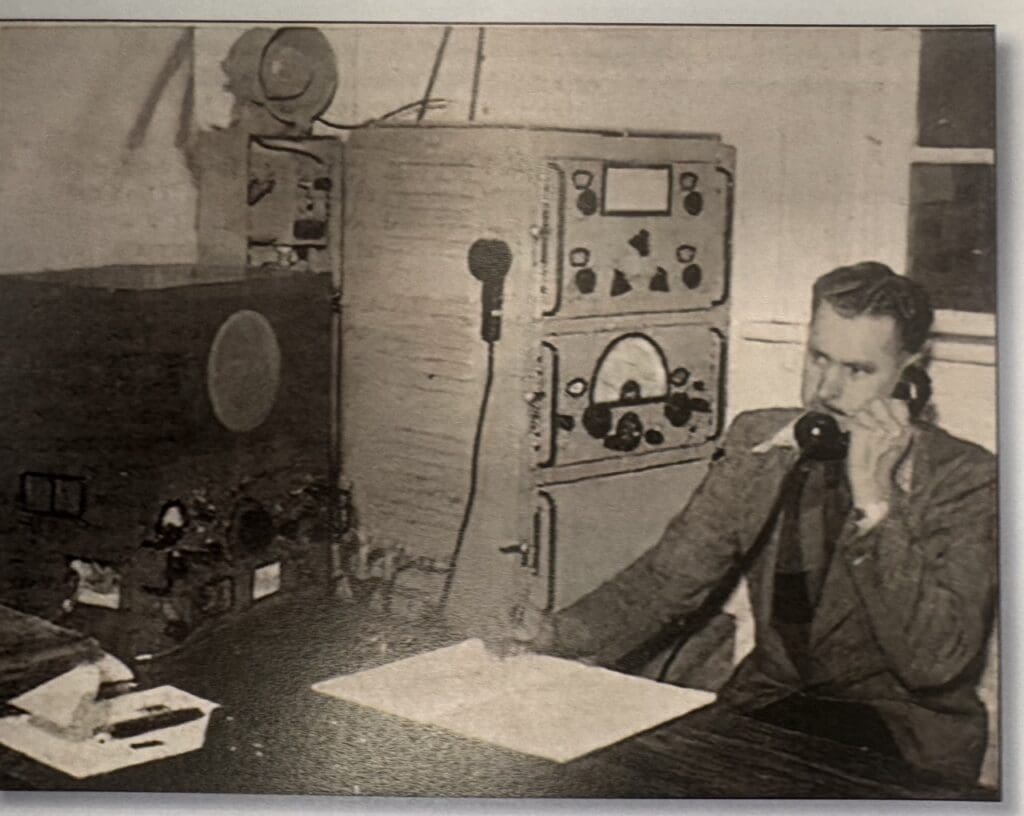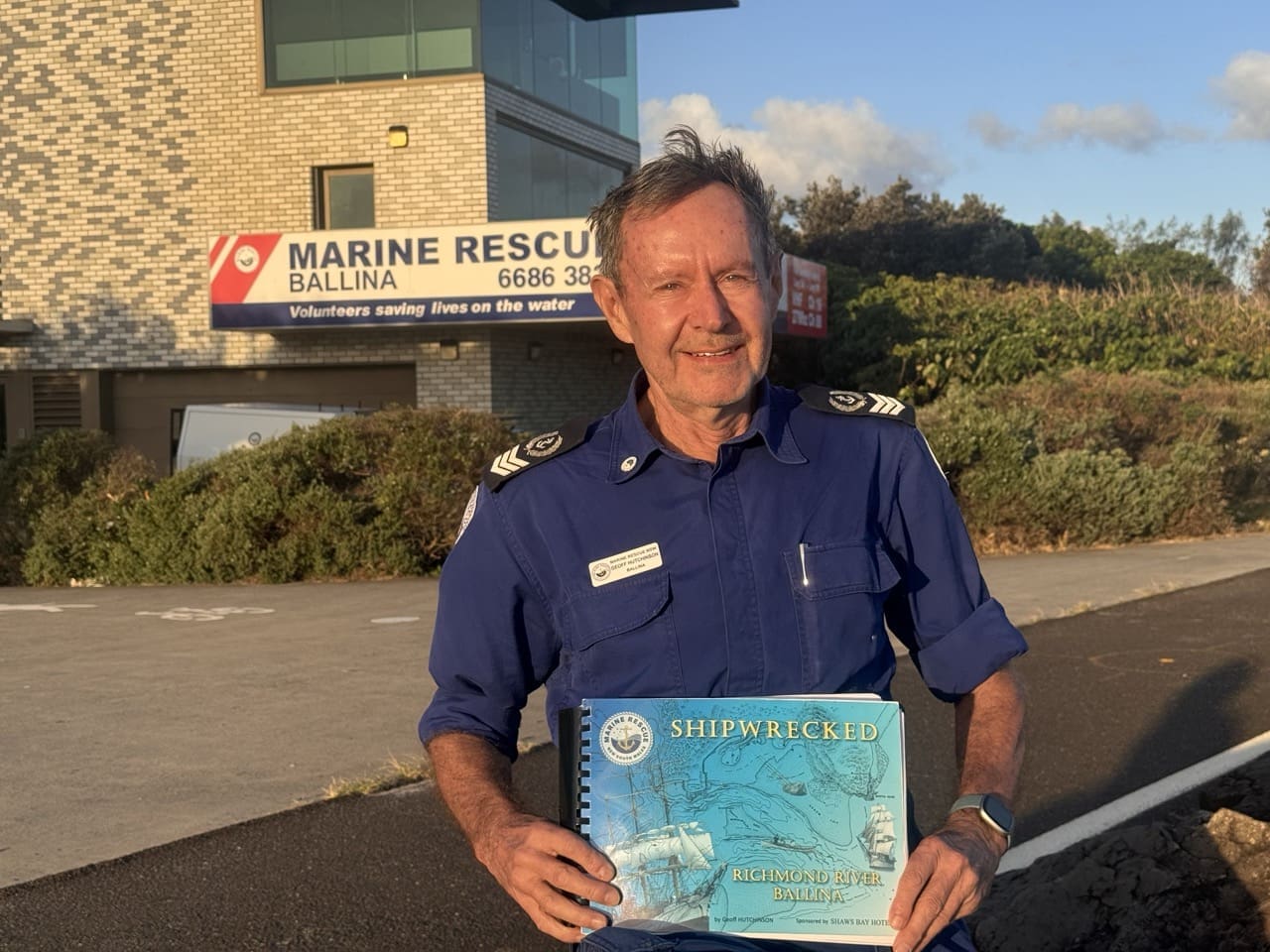Ballina’s rugged maritime history — filled with shipwrecks, storms, and swashbuckling coastal ventures — is being brought to life in a new book by local Marine Rescue volunteer Geoff Hutchinson.
Titled Shipwrecked, the book charts the dramatic evolution of Ballina as a working port, highlighting the Richmond River’s key role in NSW’s maritime past.

A long-time boating enthusiast and volunteer Boat Master with Marine Rescue Ballina, Hutchinson was inspired to write the book after assisting with more than 100 rescues himself and learning the coastline’s treacherous patterns.
What began as a simple catalogue of shipwrecks turned into a sweeping historical account of the port — from when cedar-getters tentatively made their way across the bar, to the glory days of shipping when it was the third-largest freight port in NSW after Sydney and Newcastle.
“It started as shipwrecks, but I couldn’t leave out the tugs, the pilot station, the lighthouse, the break walls — so much that has played a role in shaping Ballina,” Mr Hutchinson says.
The book begins in the 1840s when the Richmond River bar was already becoming known for its deadly shifting sandbanks.
“At that time, the river mouth entered near the current surf club, curving into Shaws Bay. Large ships couldn’t cross the dangerous shallows, so smaller boats would ferry cargo like prized cedar logs to waiting vessels anchored in the bay.”
By 1875, the Port of Richmond (as it was more widely known) was booming. Mr Hutchinson unearthed historical records showing that in just one year, 4.5 million super feet of cedar and 7.5 million super feet of hoop pine were shipped out of Ballina. These hardwoods were harvested from the “Big Scrub,” a vast subtropical rainforest stretching from Ballina to Lismore and Byron Bay — nearly all cleared by the early 1900s.
“Cedar was worth more than gold back then,” Hutchinson says. “The entire industry shaped the region, and Ballina was the hub.”
Shipwrecked documents 90 historical shipwrecks — all verified through the New South Wales shipwreck database — and around 140 maritime incidents in total. Mr Hutchinson meticulously researched newspaper archives, especially using Trove, allowing the journalists of the time to tell the stories.
One of the most harrowing events he recounts took place in 1850. After days of being “bar-bound” — stuck inside the river due to unsafe conditions at the notorious river mouth — three vessels attempted to make it to sea. At the same time, three others outside the bar had their anchors snag. A sudden mini-cyclone struck, capsizing vessels and leading to multiple deaths. The wreckage of those boats later washed up near Evans Head.
“There was a lot of carnage in those days,” he says. “But these stories were front-page news across the country — even in the Hobart Town Gazette.”
Going beyond those early boating tragedies, Shipwrecked also traces the development of Ballina’s marine infrastructure. The story includes the arrival of steam tugs operated by the Fenwick family from Sydney, the building of the North and South Walls which reshaped the river mouth, and the early use of valve radios for coastal communication in the 1950s.
The 440-page book concludes with a look at the evolution of local marine safety organisations, from the Coast Guard to today’s Marine Rescue units.

All proceeds will help fund a new rescue vessel, with the current patrol boat BA30 now more than a decade old and considered obsolete.
“The new vessel’s going into production in May,” he says. “We’re hoping the book can help us raise $150,000 toward its cost.”
Set for release in the coming months, Shipwrecked is already generating strong local interest. Mr Hutchinson believes its appeal lies in both its historical detail and its community purpose.
“You can open it anywhere and find a story — shipwrecks from 1847 to 2024, historical records, lost forests, major incidents. It’s all tied to the rise and fall of Ballina as a port,” he says.
For a coastal town shaped by the sea, Shipwrecked offers more than just a history lesson — it’s a tribute to the resilience of a community and the enduring power of the ocean.
PICTURES: (from top) Geoff Hutchinson with a copy of Shipwrecked at the Marine Rescue Tower
The Tomki, Ballina’s most famous shipwreck, possibly because it was photographed while stricken on Lighthouse Beach – September 13 1907
The Ballina Coast Guard Caravan, from before there was a tower and the organisation evolved into Marine Rescue
BELOW: The first Ballina two-way radio communications for shipping safety came in the 1950s and was based at the Fishermen’s Co-op.




0 Comments